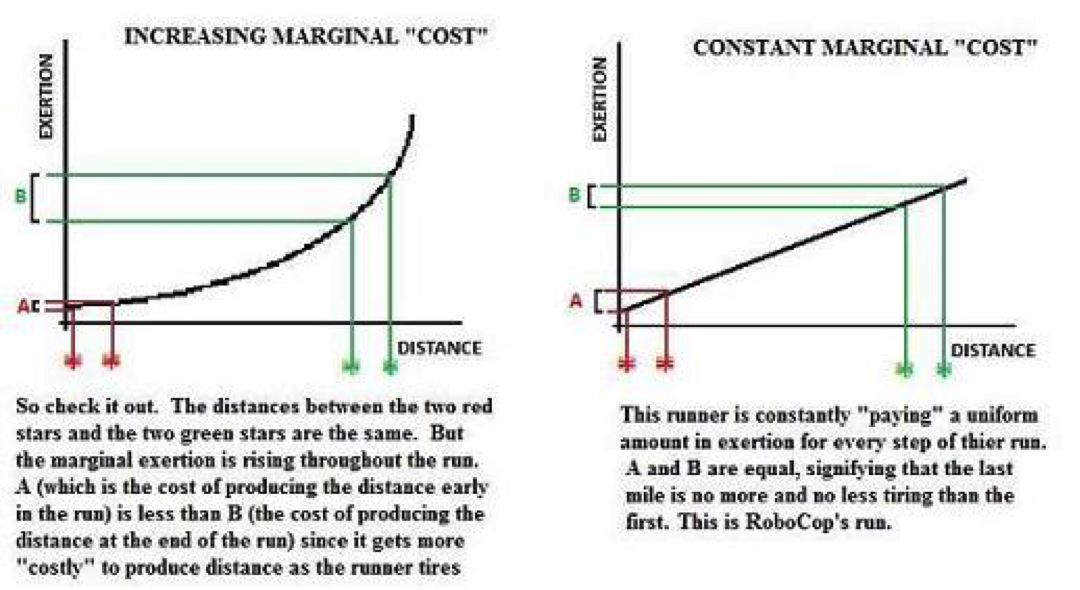Extract 4: What does Marginality really mean?
26th August 2015
In this blog, we explain how marginality can be applied to anything – even the marathon runner.
“Marginal” behaviours are as important to economics as they are to physics, maths, natural sciences, or engineering. If you’re not familiar with the idea of marginality, it can be a little confusing to grasp . But doing so is worthwhile, and once you’ve got the idea, you will start to notice it everywhere.
When economists talk about a “marginal value,” they are referring to the value of the next unit (made, sold, consumed, whatever), regardless of the previous unit’s value. This “value” can be anything: rates, time, prices, revenues, cost, whatever.
Often we won’t end up giving a marginal value a specific numerical value, as it can be a difficult thing to accurately quantify. Instead, we are just interested in the dynamic of the marginality. Is it going up or down? How drastically does it change? Or does it just stay constant?
Here’s an example. Picture a marathon runner who’s just about to start their run. We could consider that person to be a producer, and his product to be distance. In order to manufacture this product, they have input and overhead to pay, which they “pay” in exertion. As soon as the race begins, the runner doesn’t stop producing until they have manufactured their 26.2 miles. The starting gun goes off, and the race begins.
That first mile is easy. The runner is well hydrated, they feel loose, and their exertion costs are very low. Mile one will be very inexpensive for them to produce.
Our subject has now just passed the 13.1 marker (midpoint). They’re starting to tire out. Their body is tiring: their breathing is laboured and their calves are starting to burn. Now, the length of a mile has not changed during the race. The physical space between the starting line and the mile one mark is the same as the distance between miles 13.1 and 14.1. However, their production cost per mile is rising fast.
A mile away from the finish line, the runner’s muscles have gone from sore to painful. Every inhalation is a violent gasp, every step an act of will power. That last mile will feel like an eternity. The exertion expense per mile has skyrocketed to something many times its original value.
The runner is an example of a producer with a rising marginal cost of production. To ask simply “how much exertion will it cost to produce 1 mile?” doesn’t really make sense if we are aware of this marginality concept. The most accurate response will always be: “I don’t know. Depends on how many you’ve already produced.”
These graphs show the marginal “cost” of two hypothetical marathon runners, a human being and a robot:
Source: http://economystified.blogspot.co.uk/2011/04/marginality.html


0 Comments